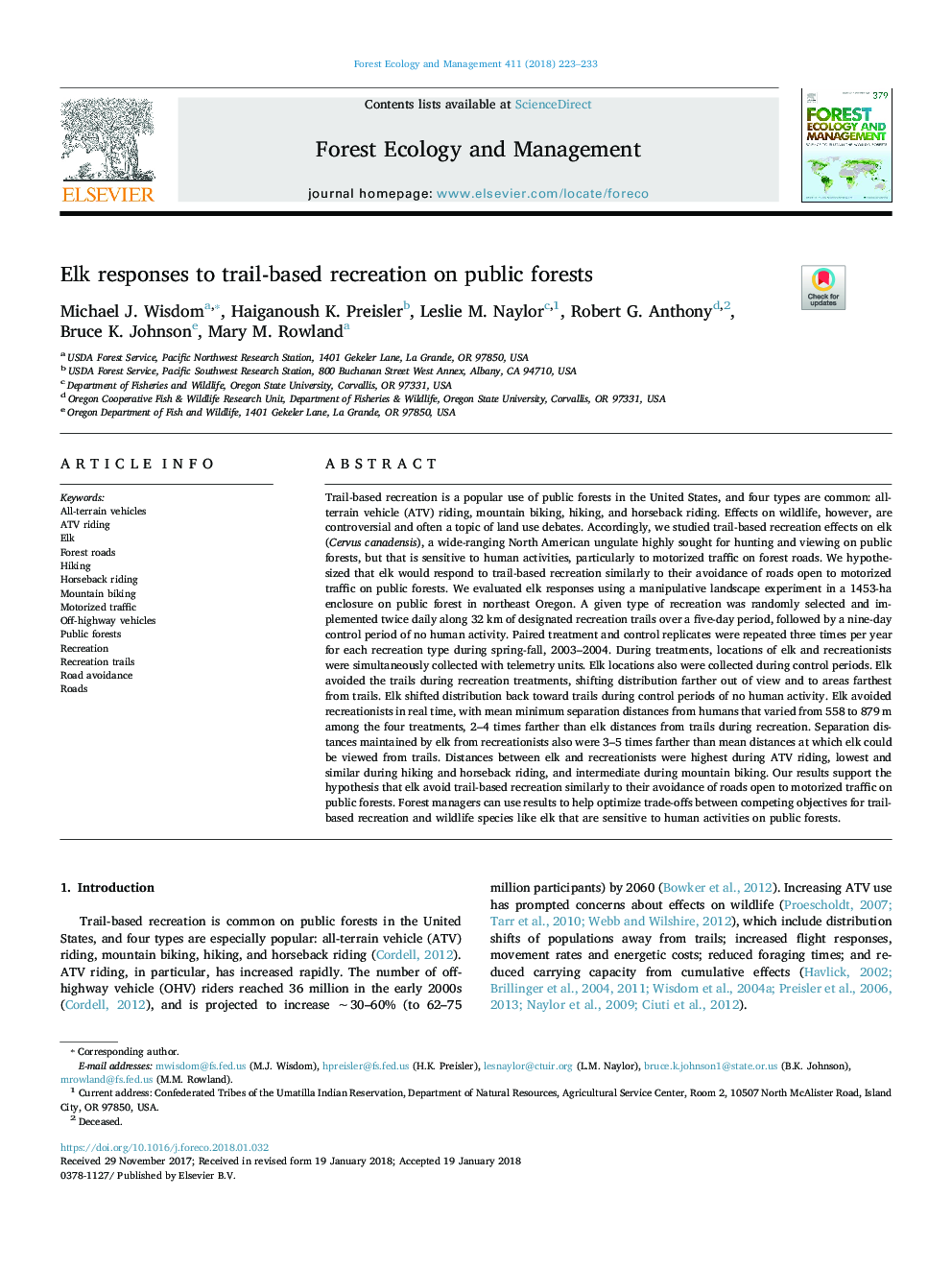| کد مقاله | کد نشریه | سال انتشار | مقاله انگلیسی | نسخه تمام متن |
|---|---|---|---|---|
| 6541837 | 1421347 | 2018 | 11 صفحه PDF | دانلود رایگان |
عنوان انگلیسی مقاله ISI
Elk responses to trail-based recreation on public forests
ترجمه فارسی عنوان
پاسخ های جالب به تفریح در مسیرهای پیاده روی در جنگل های عمومی
دانلود مقاله + سفارش ترجمه
دانلود مقاله ISI انگلیسی
رایگان برای ایرانیان
کلمات کلیدی
موضوعات مرتبط
علوم زیستی و بیوفناوری
علوم کشاورزی و بیولوژیک
بوم شناسی، تکامل، رفتار و سامانه شناسی
چکیده انگلیسی
Trail-based recreation is a popular use of public forests in the United States, and four types are common: all-terrain vehicle (ATV) riding, mountain biking, hiking, and horseback riding. Effects on wildlife, however, are controversial and often a topic of land use debates. Accordingly, we studied trail-based recreation effects on elk (Cervus canadensis), a wide-ranging North American ungulate highly sought for hunting and viewing on public forests, but that is sensitive to human activities, particularly to motorized traffic on forest roads. We hypothesized that elk would respond to trail-based recreation similarly to their avoidance of roads open to motorized traffic on public forests. We evaluated elk responses using a manipulative landscape experiment in a 1453-ha enclosure on public forest in northeast Oregon. A given type of recreation was randomly selected and implemented twice daily along 32 km of designated recreation trails over a five-day period, followed by a nine-day control period of no human activity. Paired treatment and control replicates were repeated three times per year for each recreation type during spring-fall, 2003-2004. During treatments, locations of elk and recreationists were simultaneously collected with telemetry units. Elk locations also were collected during control periods. Elk avoided the trails during recreation treatments, shifting distribution farther out of view and to areas farthest from trails. Elk shifted distribution back toward trails during control periods of no human activity. Elk avoided recreationists in real time, with mean minimum separation distances from humans that varied from 558 to 879â¯m among the four treatments, 2-4 times farther than elk distances from trails during recreation. Separation distances maintained by elk from recreationists also were 3-5 times farther than mean distances at which elk could be viewed from trails. Distances between elk and recreationists were highest during ATV riding, lowest and similar during hiking and horseback riding, and intermediate during mountain biking. Our results support the hypothesis that elk avoid trail-based recreation similarly to their avoidance of roads open to motorized traffic on public forests. Forest managers can use results to help optimize trade-offs between competing objectives for trail-based recreation and wildlife species like elk that are sensitive to human activities on public forests.
ناشر
Database: Elsevier - ScienceDirect (ساینس دایرکت)
Journal: Forest Ecology and Management - Volume 411, 1 March 2018, Pages 223-233
Journal: Forest Ecology and Management - Volume 411, 1 March 2018, Pages 223-233
نویسندگان
Michael J. Wisdom, Haiganoush K. Preisler, Leslie M. Naylor, Robert G. Anthony, Bruce K. Johnson, Mary M. Rowland,
